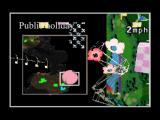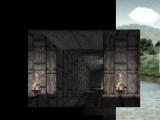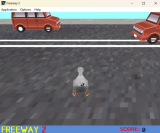Events
This event is all about making games in any Clickteam product! Anything goes!
You can use Klik N Play, Games Factory 1 & 2, Click and Create, Multimedia Fusion 1 & 2, anything related to Clickteam.
You could use KNP 2 too, but it hasn't been released yet (or so I think)
So go make games!
AWWWWAEAWA SUCKS FOR YOU
GAME CANCELLED. DUE TO PEOPLE NOT WANTING TO CONTRIBUTE MY GAME.
Now without making this i'm purely bored,
btw there's yet another game i'm uploading into the Dropbox folder and it is also done: THE ROYAL ADVENTURES OF MR CAT VS TAILS ADVANCE THE GAME.
If you really don't know what's Tails Adventure, it's a poorly made sonic fangame series which you just have to get all things like sonics, knuckles, etc. And also they keep overusing the Whisker and Johnny Battle theme from Sonic Rush Adventure, is this idea turdy? This game will be against that dumb series and yeah...HARD STUFF.
P.S. There's still the Player 1 Sprite Sheet, if you has chance.
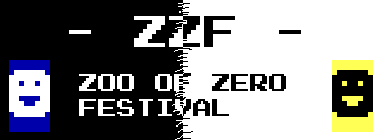
ZZT (Zoo of Zero Tolerance, the game from the creator of Jazz Jackrabbit) is back more than ever with a festival from Glorious Trainwrecks:
ZZF (Zoo of Zero Festival)! It's a event where you make some cool games in ZZT, nuff said, i can't describe this more.
This event is all about making games in any Clickteam product! Anything goes!
You can use Klik N Play, Games Factory 1 & 2, Click and Create, Multimedia Fusion 1 & 2, anything related to Clickteam.
You could use KNP 2 too, but it hasn't been released yet (or so I think)
So go make games!
Hi GT gang.
I don't know how aware of this people here are, but I am an artist in my final year of a fine art degree. I have started making virtual performances—that is using virtual, videogame-like spaces as locations for performances—and would like your help creating new spaces in which to perform.
The only requirement is that they be 3-D. Unity 3D is super easy to just plonk models in and have camera and physics taken care of, and I can help you if necessary, and 3D Rad is simple for similar reasons. Google Sketchup is a nice simple 3D modelling program, and a plugin that exports to Unity is available called PlayUp. There's also a 3D Rad related plugin that kind of confused me.
I won't give you any further rules for these spaces, but I will vaguely advise that—so far it seems—a good virtual performance space:
- Be open (whatever that means to you).
- Have things to perform with.
- Be played from a first-person perspective.
But challenges to these rules are much more than welcome.
I will be using these spaces to help me figure out what makes a good performance space, and I will stream myself playing each entry submitted via twitch.tv/ryliejamesthomas. Potentially some may also be used in my graduate exhibition (but I'll ask permission for anything public), but who knows; it's early days, and I still have a lot to think about.
The starting point for this idea was our own Fabien Poree's Destroy Your Home, and some examples of me performing in this game can be seen here: https://www.youtube.com/playlist?list=PLaSzjHiPqLH4-_BxBSXlCq1SG-uXYWqci
[i]Short version:[/b]
Make some 3-D games that are low on rules for me to play round with/in.
Thanks!
Edit: now with 'cool 3d gif"
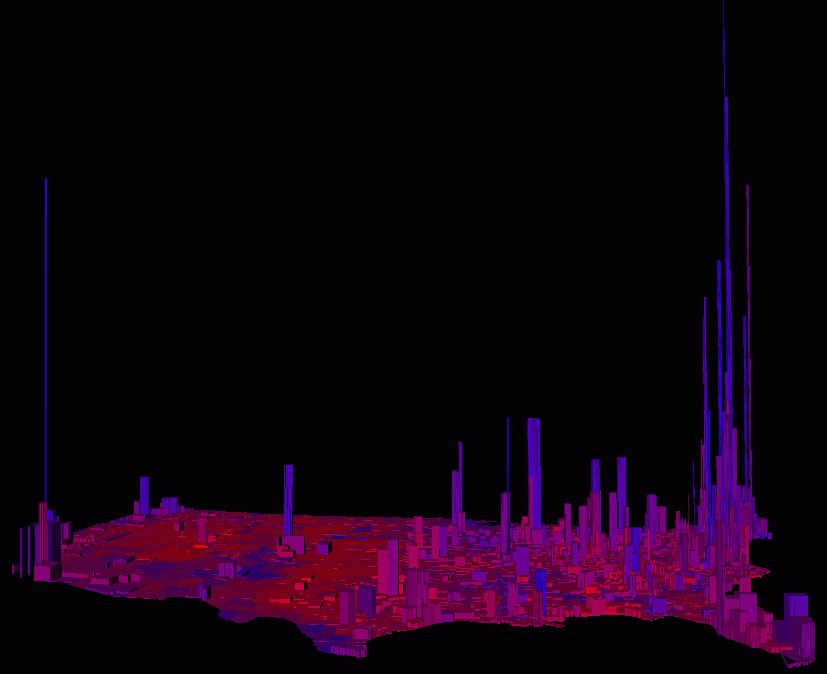
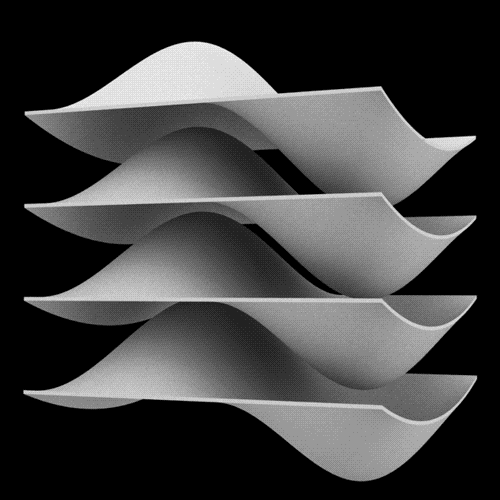
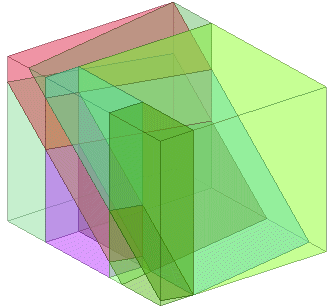
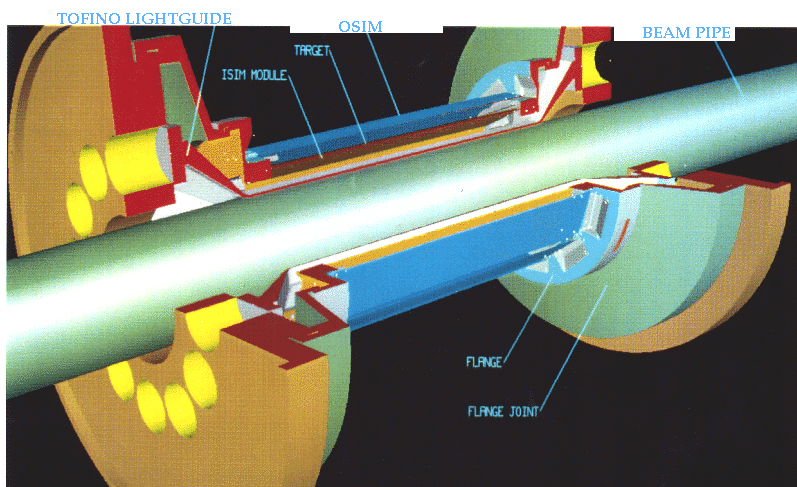
Rylie.
This event is all about making games in any Clickteam product! Anything goes!
You can use Klik N Play, Games Factory 1 & 2, Click and Create, Multimedia Fusion 1 & 2, anything related to Clickteam.
You could use KNP 2 too, but it hasn't been released yet (or so I think)
So go make games!
Hi GT gang.
I don't know how aware of this people here are, but I am an artist in my final year of a fine art degree. I have started making virtual performances—that is using virtual, videogame-like spaces as locations for performances—and would like your help creating new spaces in which to perform.
The only requirement is that they be 3-D. Unity 3D is super easy to just plonk models in and have camera and physics taken care of, and I can help you if necessary, and 3D Rad is simple for similar reasons. Google Sketchup is a nice simple 3D modelling program, and a plugin that exports to Unity is available called PlayUp. There's also a 3D Rad related plugin that kind of confused me.
I won't give you any further rules for these spaces, but I will vaguely advise that—so far it seems—a good virtual performance space:
- Be open (whatever that means to you).
- Have things to perform with.
- Be played from a first-person perspective.
But challenges to these rules are much more than welcome.
I will be using these spaces to help me figure out what makes a good performance space, and I will stream myself playing each entry submitted via twitch.tv/ryliejamesthomas. Potentially some may also be used in my graduate exhibition (but I'll ask permission for anything public), but who knows; it's early days, and I still have a lot to think about.
The starting point for this idea was our own Fabien Poree's Destroy Your Home, and some examples of me performing in this game can be seen here: https://www.youtube.com/playlist?list=PLaSzjHiPqLH4-_BxBSXlCq1SG-uXYWqci
[i]Short version:[/b]
Make some 3-D games that are low on rules for me to play round with/in.
Thanks!
Edit: now with 'cool 3d gif"




Rylie.
This event is all about making games in any Clickteam product! Anything goes!
You can use Klik N Play, Games Factory 1 & 2, Click and Create, Multimedia Fusion 1 & 2, anything related to Clickteam.
You could use KNP 2 too, but it hasn't been released yet (or so I think)
So go make games!
This event is all about making games in any Clickteam product! Anything goes!
You can use Klik N Play, Games Factory 1 & 2, Click and Create, Multimedia Fusion 1 & 2, anything related to Clickteam.
You could use KNP 2 too, but it hasn't been released yet (or so I think)
So go make games!
This event is all about making games in any Clickteam product! Anything goes!
You can use Klik N Play, Games Factory 1 & 2, Click and Create, Multimedia Fusion 1 & 2, anything related to Clickteam.
You could use KNP 2 too, but it hasn't been released yet (or so I think)
So go make games!
This event is all about making games in any Clickteam product! Anything goes!
You can use Klik N Play, Games Factory 1 & 2, Click and Create, Multimedia Fusion 1 & 2, anything related to Clickteam.
You could use KNP 2 too, but it hasn't been released yet (or so I think)
So go make games!
This event is all about making games in any Clickteam product! Anything goes!
You can use Klik N Play, Games Factory 1 & 2, Click and Create, Multimedia Fusion 1 & 2, anything related to Clickteam.
You could use KNP 2 too, but it hasn't been released yet (or so I think)
So go make games!
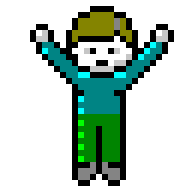
Melinda has sought to expand her Clubhouse beyond the original 148 levels ever since Chip McCallahan finished them all back in Chip's Challenge. Now she is enlisting prospective Bit Busters to make new levels! What do you say?
This is a Chip's Challenge level making event! Create one or more levels and submit them here as a level set!
Tile World is a pretty good engine recreation of Chip's Challenge (it even emulates some, but not all bugs found in the Microsoft game). It includes a facility for easily adding and playing custom levels. For legal reasons, the original levels (dubbed CC1) are not included, but there is an unofficial tutorial and a myriad of freely downloadable custom level sets to help you become familiar with the game's rules.
Here is a list of editors available for making levels:
CCEdit - the new version is cross-platform. Old version is Win32-based but runs on Wine.
Chip's Challenge Level Designer - needs .NET Runtime.
The levels themselves are stored in .dat files. Multiple levels can be placed inside a .dat file, so feel free to make as many or as few levels as you'd like.
For Tile World users, include a .dac file, which is a text file that describes the level set contained within a .dat file.
Editing tips:
- Get a feel for how all the objects and tiles interact with one another. Play some existing Chip's Challenge levels, or refer to the Chip's Challenge Wiki's list of tiles as a reference.
- Did you know that Chip's Challenge levels are actually composed of TWO layers? There is an upper layer and a lower layer. Depending on the layer you place tiles and objects on, different things will happen. For example, you can place a pushable block on top of a computer chip so that the chip is hidden under the block - pushing the block will make you pick the chip up. Use of both layers is also required for other things, notably clone machines...
- Functional clone machines are created by placing the clone machine itself on the lower layer and a monster or directional block on the upper layer.
- Clone machines and bear traps can only be activated by pressing a button, and you must connect this button to the desired clone machine or bear trap while designing your level. Your editor will assist you with this.
- Each monster moves in a specific order, one at a time. Depending on how you arrange your monsters, their movement pattern may be disrupted if they aren't ordered correctly (EG. monsters forming a line, the one in the back moves first and bumps into the one in front, changing course). Your editor should include a facility for adjusting monster order.
- Make sure you include enough time. As a general rule of thumb, time yourself as you play through the level. You should provide roughly twice as much time as it took for you to finish the level yourself. If the level is particularly lengthy and complex, consider removing the time limit.
- Make sure you set the required number of chips correctly. Do not require more chips than are actually in the level. On the other hand, it is okay for you to require LESS chips than are actually in the level - Level 12: HUNT is an example of such usage.
- You get a 32x32 grid to make each level in. This is larger than you might expect at first. Avoid the temptation to fill the entire space with the same gimmick, particularly if it's a repetitive gimmick. Basically, avoid making a level like WRITERS BLOCK.
- Use Blobs sparingly. Beginners and experts alike hate them. Beginners hate Blobs because they cause unfair deaths. Experts hate Blobs because their random movement makes levels hard to time attack. The infamous BLOBNET should be enough to convince you of this.
GO BIT BUSTERS!

Melinda has sought to expand her Clubhouse beyond the original 148 levels ever since Chip McCallahan finished them all back in Chip's Challenge. Now she is enlisting prospective Bit Busters to make new levels! What do you say?
This is a Chip's Challenge level making event! Create one or more levels and submit them here as a level set!
Tile World is a pretty good engine recreation of Chip's Challenge (it even emulates some, but not all bugs found in the Microsoft game). It includes a facility for easily adding and playing custom levels. For legal reasons, the original levels (dubbed CC1) are not included, but there is an unofficial tutorial and a myriad of freely downloadable custom level sets to help you become familiar with the game's rules.
Here is a list of editors available for making levels:
CCEdit - the new version is cross-platform. Old version is Win32-based but runs on Wine.
Chip's Challenge Level Designer - needs .NET Runtime.
The levels themselves are stored in .dat files. Multiple levels can be placed inside a .dat file, so feel free to make as many or as few levels as you'd like.
For Tile World users, include a .dac file, which is a text file that describes the level set contained within a .dat file.
Editing tips:
- Get a feel for how all the objects and tiles interact with one another. Play some existing Chip's Challenge levels, or refer to the Chip's Challenge Wiki's list of tiles as a reference.
- Did you know that Chip's Challenge levels are actually composed of TWO layers? There is an upper layer and a lower layer. Depending on the layer you place tiles and objects on, different things will happen. For example, you can place a pushable block on top of a computer chip so that the chip is hidden under the block - pushing the block will make you pick the chip up. Use of both layers is also required for other things, notably clone machines...
- Functional clone machines are created by placing the clone machine itself on the lower layer and a monster or directional block on the upper layer.
- Clone machines and bear traps can only be activated by pressing a button, and you must connect this button to the desired clone machine or bear trap while designing your level. Your editor will assist you with this.
- Each monster moves in a specific order, one at a time. Depending on how you arrange your monsters, their movement pattern may be disrupted if they aren't ordered correctly (EG. monsters forming a line, the one in the back moves first and bumps into the one in front, changing course). Your editor should include a facility for adjusting monster order.
- Make sure you include enough time. As a general rule of thumb, time yourself as you play through the level. You should provide roughly twice as much time as it took for you to finish the level yourself. If the level is particularly lengthy and complex, consider removing the time limit.
- Make sure you set the required number of chips correctly. Do not require more chips than are actually in the level. On the other hand, it is okay for you to require LESS chips than are actually in the level - Level 12: HUNT is an example of such usage.
- You get a 32x32 grid to make each level in. This is larger than you might expect at first. Avoid the temptation to fill the entire space with the same gimmick, particularly if it's a repetitive gimmick. Basically, avoid making a level like WRITERS BLOCK.
- Use Blobs sparingly. Beginners and experts alike hate them. Beginners hate Blobs because they cause unfair deaths. Experts hate Blobs because their random movement makes levels hard to time attack. The infamous BLOBNET should be enough to convince you of this.
GO BIT BUSTERS!

Melinda has sought to expand her Clubhouse beyond the original 148 levels ever since Chip McCallahan finished them all back in Chip's Challenge. Now she is enlisting prospective Bit Busters to make new levels! What do you say?
This is a Chip's Challenge level making event! Create one or more levels and submit them here as a level set!
Tile World is a pretty good engine recreation of Chip's Challenge (it even emulates some, but not all bugs found in the Microsoft game). It includes a facility for easily adding and playing custom levels. For legal reasons, the original levels (dubbed CC1) are not included, but there is an unofficial tutorial and a myriad of freely downloadable custom level sets to help you become familiar with the game's rules.
Here is a list of editors available for making levels:
CCEdit - the new version is cross-platform. Old version is Win32-based but runs on Wine.
Chip's Challenge Level Designer - needs .NET Runtime.
The levels themselves are stored in .dat files. Multiple levels can be placed inside a .dat file, so feel free to make as many or as few levels as you'd like.
For Tile World users, include a .dac file, which is a text file that describes the level set contained within a .dat file.
Editing tips:
- Get a feel for how all the objects and tiles interact with one another. Play some existing Chip's Challenge levels, or refer to the Chip's Challenge Wiki's list of tiles as a reference.
- Did you know that Chip's Challenge levels are actually composed of TWO layers? There is an upper layer and a lower layer. Depending on the layer you place tiles and objects on, different things will happen. For example, you can place a pushable block on top of a computer chip so that the chip is hidden under the block - pushing the block will make you pick the chip up. Use of both layers is also required for other things, notably clone machines...
- Functional clone machines are created by placing the clone machine itself on the lower layer and a monster or directional block on the upper layer.
- Clone machines and bear traps can only be activated by pressing a button, and you must connect this button to the desired clone machine or bear trap while designing your level. Your editor will assist you with this.
- Each monster moves in a specific order, one at a time. Depending on how you arrange your monsters, their movement pattern may be disrupted if they aren't ordered correctly (EG. monsters forming a line, the one in the back moves first and bumps into the one in front, changing course). Your editor should include a facility for adjusting monster order.
- Make sure you include enough time. As a general rule of thumb, time yourself as you play through the level. You should provide roughly twice as much time as it took for you to finish the level yourself. If the level is particularly lengthy and complex, consider removing the time limit.
- Make sure you set the required number of chips correctly. Do not require more chips than are actually in the level. On the other hand, it is okay for you to require LESS chips than are actually in the level - Level 12: HUNT is an example of such usage.
- You get a 32x32 grid to make each level in. This is larger than you might expect at first. Avoid the temptation to fill the entire space with the same gimmick, particularly if it's a repetitive gimmick. Basically, avoid making a level like WRITERS BLOCK.
- Use Blobs sparingly. Beginners and experts alike hate them. Beginners hate Blobs because they cause unfair deaths. Experts hate Blobs because their random movement makes levels hard to time attack. The infamous BLOBNET should be enough to convince you of this.
GO BIT BUSTERS!

Melinda has sought to expand her Clubhouse beyond the original 148 levels ever since Chip McCallahan finished them all back in Chip's Challenge. Now she is enlisting prospective Bit Busters to make new levels! What do you say?
This is a Chip's Challenge level making event! Create one or more levels and submit them here as a level set!
Tile World is a pretty good engine recreation of Chip's Challenge (it even emulates some, but not all bugs found in the Microsoft game). It includes a facility for easily adding and playing custom levels. For legal reasons, the original levels (dubbed CC1) are not included, but there is an unofficial tutorial and a myriad of freely downloadable custom level sets to help you become familiar with the game's rules.
Here is a list of editors available for making levels:
CCEdit - the new version is cross-platform. Old version is Win32-based but runs on Wine.
Chip's Challenge Level Designer - needs .NET Runtime.
The levels themselves are stored in .dat files. Multiple levels can be placed inside a .dat file, so feel free to make as many or as few levels as you'd like.
For Tile World users, include a .dac file, which is a text file that describes the level set contained within a .dat file.
Editing tips:
- Get a feel for how all the objects and tiles interact with one another. Play some existing Chip's Challenge levels, or refer to the Chip's Challenge Wiki's list of tiles as a reference.
- Did you know that Chip's Challenge levels are actually composed of TWO layers? There is an upper layer and a lower layer. Depending on the layer you place tiles and objects on, different things will happen. For example, you can place a pushable block on top of a computer chip so that the chip is hidden under the block - pushing the block will make you pick the chip up. Use of both layers is also required for other things, notably clone machines...
- Functional clone machines are created by placing the clone machine itself on the lower layer and a monster or directional block on the upper layer.
- Clone machines and bear traps can only be activated by pressing a button, and you must connect this button to the desired clone machine or bear trap while designing your level. Your editor will assist you with this.
- Each monster moves in a specific order, one at a time. Depending on how you arrange your monsters, their movement pattern may be disrupted if they aren't ordered correctly (EG. monsters forming a line, the one in the back moves first and bumps into the one in front, changing course). Your editor should include a facility for adjusting monster order.
- Make sure you include enough time. As a general rule of thumb, time yourself as you play through the level. You should provide roughly twice as much time as it took for you to finish the level yourself. If the level is particularly lengthy and complex, consider removing the time limit.
- Make sure you set the required number of chips correctly. Do not require more chips than are actually in the level. On the other hand, it is okay for you to require LESS chips than are actually in the level - Level 12: HUNT is an example of such usage.
- You get a 32x32 grid to make each level in. This is larger than you might expect at first. Avoid the temptation to fill the entire space with the same gimmick, particularly if it's a repetitive gimmick. Basically, avoid making a level like WRITERS BLOCK.
- Use Blobs sparingly. Beginners and experts alike hate them. Beginners hate Blobs because they cause unfair deaths. Experts hate Blobs because their random movement makes levels hard to time attack. The infamous BLOBNET should be enough to convince you of this.
GO BIT BUSTERS!

Melinda has sought to expand her Clubhouse beyond the original 148 levels ever since Chip McCallahan finished them all back in Chip's Challenge. Now she is enlisting prospective Bit Busters to make new levels! What do you say?
This is a Chip's Challenge level making event! Create one or more levels and submit them here as a level set!
Tile World is a pretty good engine recreation of Chip's Challenge (it even emulates some, but not all bugs found in the Microsoft game). It includes a facility for easily adding and playing custom levels. For legal reasons, the original levels (dubbed CC1) are not included, but there is an unofficial tutorial and a myriad of freely downloadable custom level sets to help you become familiar with the game's rules.
Here is a list of editors available for making levels:
CCEdit - the new version is cross-platform. Old version is Win32-based but runs on Wine.
Chip's Challenge Level Designer - needs .NET Runtime.
The levels themselves are stored in .dat files. Multiple levels can be placed inside a .dat file, so feel free to make as many or as few levels as you'd like.
For Tile World users, include a .dac file, which is a text file that describes the level set contained within a .dat file.
Editing tips:
- Get a feel for how all the objects and tiles interact with one another. Play some existing Chip's Challenge levels, or refer to the Chip's Challenge Wiki's list of tiles as a reference.
- Did you know that Chip's Challenge levels are actually composed of TWO layers? There is an upper layer and a lower layer. Depending on the layer you place tiles and objects on, different things will happen. For example, you can place a pushable block on top of a computer chip so that the chip is hidden under the block - pushing the block will make you pick the chip up. Use of both layers is also required for other things, notably clone machines...
- Functional clone machines are created by placing the clone machine itself on the lower layer and a monster or directional block on the upper layer.
- Clone machines and bear traps can only be activated by pressing a button, and you must connect this button to the desired clone machine or bear trap while designing your level. Your editor will assist you with this.
- Each monster moves in a specific order, one at a time. Depending on how you arrange your monsters, their movement pattern may be disrupted if they aren't ordered correctly (EG. monsters forming a line, the one in the back moves first and bumps into the one in front, changing course). Your editor should include a facility for adjusting monster order.
- Make sure you include enough time. As a general rule of thumb, time yourself as you play through the level. You should provide roughly twice as much time as it took for you to finish the level yourself. If the level is particularly lengthy and complex, consider removing the time limit.
- Make sure you set the required number of chips correctly. Do not require more chips than are actually in the level. On the other hand, it is okay for you to require LESS chips than are actually in the level - Level 12: HUNT is an example of such usage.
- You get a 32x32 grid to make each level in. This is larger than you might expect at first. Avoid the temptation to fill the entire space with the same gimmick, particularly if it's a repetitive gimmick. Basically, avoid making a level like WRITERS BLOCK.
- Use Blobs sparingly. Beginners and experts alike hate them. Beginners hate Blobs because they cause unfair deaths. Experts hate Blobs because their random movement makes levels hard to time attack. The infamous BLOBNET should be enough to convince you of this.
GO BIT BUSTERS!

Melinda has sought to expand her Clubhouse beyond the original 148 levels ever since Chip McCallahan finished them all back in Chip's Challenge. Now she is enlisting prospective Bit Busters to make new levels! What do you say?
This is a Chip's Challenge level making event! Create one or more levels and submit them here as a level set!
Tile World is a pretty good engine recreation of Chip's Challenge (it even emulates some, but not all bugs found in the Microsoft game). It includes a facility for easily adding and playing custom levels. For legal reasons, the original levels (dubbed CC1) are not included, but there is an unofficial tutorial and a myriad of freely downloadable custom level sets to help you become familiar with the game's rules.
Here is a list of editors available for making levels:
CCEdit - the new version is cross-platform. Old version is Win32-based but runs on Wine.
Chip's Challenge Level Designer - needs .NET Runtime.
The levels themselves are stored in .dat files. Multiple levels can be placed inside a .dat file, so feel free to make as many or as few levels as you'd like.
For Tile World users, include a .dac file, which is a text file that describes the level set contained within a .dat file.
Editing tips:
- Get a feel for how all the objects and tiles interact with one another. Play some existing Chip's Challenge levels, or refer to the Chip's Challenge Wiki's list of tiles as a reference.
- Did you know that Chip's Challenge levels are actually composed of TWO layers? There is an upper layer and a lower layer. Depending on the layer you place tiles and objects on, different things will happen. For example, you can place a pushable block on top of a computer chip so that the chip is hidden under the block - pushing the block will make you pick the chip up. Use of both layers is also required for other things, notably clone machines...
- Functional clone machines are created by placing the clone machine itself on the lower layer and a monster or directional block on the upper layer.
- Clone machines and bear traps can only be activated by pressing a button, and you must connect this button to the desired clone machine or bear trap while designing your level. Your editor will assist you with this.
- Each monster moves in a specific order, one at a time. Depending on how you arrange your monsters, their movement pattern may be disrupted if they aren't ordered correctly (EG. monsters forming a line, the one in the back moves first and bumps into the one in front, changing course). Your editor should include a facility for adjusting monster order.
- Make sure you include enough time. As a general rule of thumb, time yourself as you play through the level. You should provide roughly twice as much time as it took for you to finish the level yourself. If the level is particularly lengthy and complex, consider removing the time limit.
- Make sure you set the required number of chips correctly. Do not require more chips than are actually in the level. On the other hand, it is okay for you to require LESS chips than are actually in the level - Level 12: HUNT is an example of such usage.
- You get a 32x32 grid to make each level in. This is larger than you might expect at first. Avoid the temptation to fill the entire space with the same gimmick, particularly if it's a repetitive gimmick. Basically, avoid making a level like WRITERS BLOCK.
- Use Blobs sparingly. Beginners and experts alike hate them. Beginners hate Blobs because they cause unfair deaths. Experts hate Blobs because their random movement makes levels hard to time attack. The infamous BLOBNET should be enough to convince you of this.
GO BIT BUSTERS!

Melinda has sought to expand her Clubhouse beyond the original 148 levels ever since Chip McCallahan finished them all back in Chip's Challenge. Now she is enlisting prospective Bit Busters to make new levels! What do you say?
This is a Chip's Challenge level making event! Create one or more levels and submit them here as a level set!
Tile World is a pretty good engine recreation of Chip's Challenge (it even emulates some, but not all bugs found in the Microsoft game). It includes a facility for easily adding and playing custom levels. For legal reasons, the original levels (dubbed CC1) are not included, but there is an unofficial tutorial and a myriad of freely downloadable custom level sets to help you become familiar with the game's rules.
Here is a list of editors available for making levels:
CCEdit - the new version is cross-platform. Old version is Win32-based but runs on Wine.
Chip's Challenge Level Designer - needs .NET Runtime.
The levels themselves are stored in .dat files. Multiple levels can be placed inside a .dat file, so feel free to make as many or as few levels as you'd like.
For Tile World users, include a .dac file, which is a text file that describes the level set contained within a .dat file.
Editing tips:
- Get a feel for how all the objects and tiles interact with one another. Play some existing Chip's Challenge levels, or refer to the Chip's Challenge Wiki's list of tiles as a reference.
- Did you know that Chip's Challenge levels are actually composed of TWO layers? There is an upper layer and a lower layer. Depending on the layer you place tiles and objects on, different things will happen. For example, you can place a pushable block on top of a computer chip so that the chip is hidden under the block - pushing the block will make you pick the chip up. Use of both layers is also required for other things, notably clone machines...
- Functional clone machines are created by placing the clone machine itself on the lower layer and a monster or directional block on the upper layer.
- Clone machines and bear traps can only be activated by pressing a button, and you must connect this button to the desired clone machine or bear trap while designing your level. Your editor will assist you with this.
- Each monster moves in a specific order, one at a time. Depending on how you arrange your monsters, their movement pattern may be disrupted if they aren't ordered correctly (EG. monsters forming a line, the one in the back moves first and bumps into the one in front, changing course). Your editor should include a facility for adjusting monster order.
- Make sure you include enough time. As a general rule of thumb, time yourself as you play through the level. You should provide roughly twice as much time as it took for you to finish the level yourself. If the level is particularly lengthy and complex, consider removing the time limit.
- Make sure you set the required number of chips correctly. Do not require more chips than are actually in the level. On the other hand, it is okay for you to require LESS chips than are actually in the level - Level 12: HUNT is an example of such usage.
- You get a 32x32 grid to make each level in. This is larger than you might expect at first. Avoid the temptation to fill the entire space with the same gimmick, particularly if it's a repetitive gimmick. Basically, avoid making a level like WRITERS BLOCK.
- Use Blobs sparingly. Beginners and experts alike hate them. Beginners hate Blobs because they cause unfair deaths. Experts hate Blobs because their random movement makes levels hard to time attack. The infamous BLOBNET should be enough to convince you of this.
GO BIT BUSTERS!
The Klik of the Month Klub meets right here on this very website on the third Saturday of every month at 4pm Pacific Time (taking daylight savings into consideration) for a two hour Klik & Play Showdown. Everyone who participates gets two hours to create something from scratch in Klik & Play. Abusing the stock objects is encouraged. If you really loathe Klik & Play you can use whatever game development platform you want. Two hours is a pretty tight time limit, though, so choose wisely!
Klik & Play is absolutely free to download, and learning it takes minutes, so everyone can get in on the action.
Want to talk to your fellow Klikwreckers? Join us on IRC -- server irc.freenode.net, channel #glorioustrainwrecks. We've also got a Mumble voice chat server -- just connect to glorioustrainwrecks.com using Mumble and you can talk to us like real human beings! Join the mayhem!
After you've made your game, you should upload it here!
For more information, check out the KotM N00B FAQ.
Sign up using the "Sign Up" tab above if you want to get reminded by email the day before the klikkening begins!


